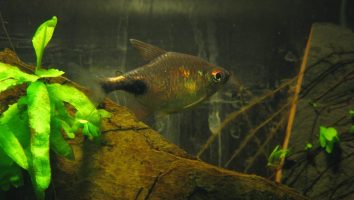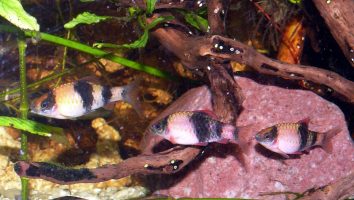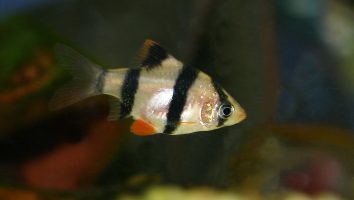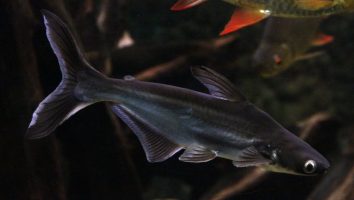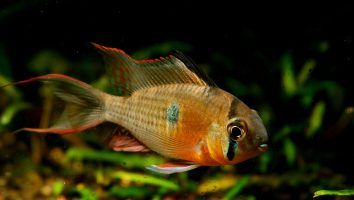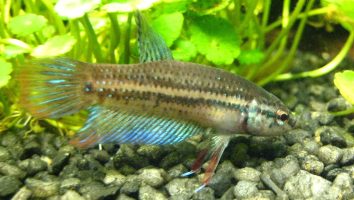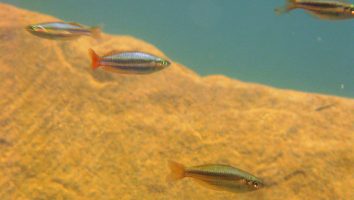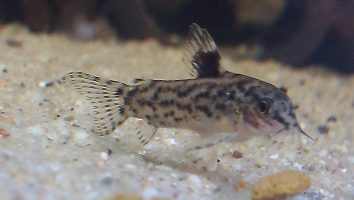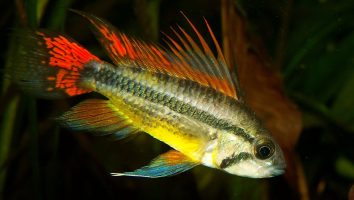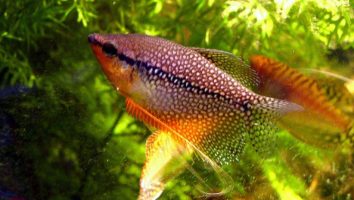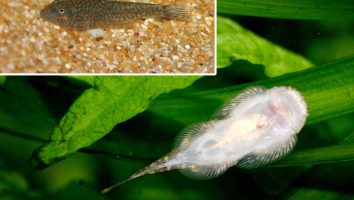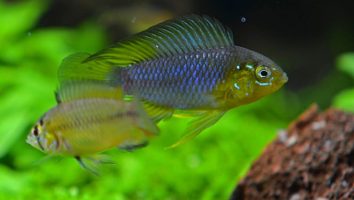The Malawi eyebiter is a freshwater fish that is native to the waters of Lake Malawi in Africa. This species is known for its striking appearance, which includes bright colors and a large mouth.
Despite their aggressive appearance, Malawi eyebiters are actually quite peaceful fish. They are also easy to care for, making them a good choice for beginner fishkeepers.
If you’re thinking about getting a Malawi eyebiter, read on to learn everything you need to know about their care.
Table of contents
Species overview
The Malawi eyebiter (scientific name: Cyrtocara moorii) is a type of freshwater cichlid that’s native to Lake Malawi in Africa.
These fish are found in a wide range of habitats, from rocky areas to sandy shores. They prefer to stay near the bottom of the lake where they can find plenty of food.
The Malawi eyebiter is a peaceful fish that gets along well with other cichlids. They are also known to be quite tolerant of different water conditions, which makes them a good choice for beginner aquarium hobbyists.
One of the most distinctive features of the Malawi eyebiter is the blue spots that cover their body. These spots are what give this fish its other common name, the blue spot cichlid.
Appearance
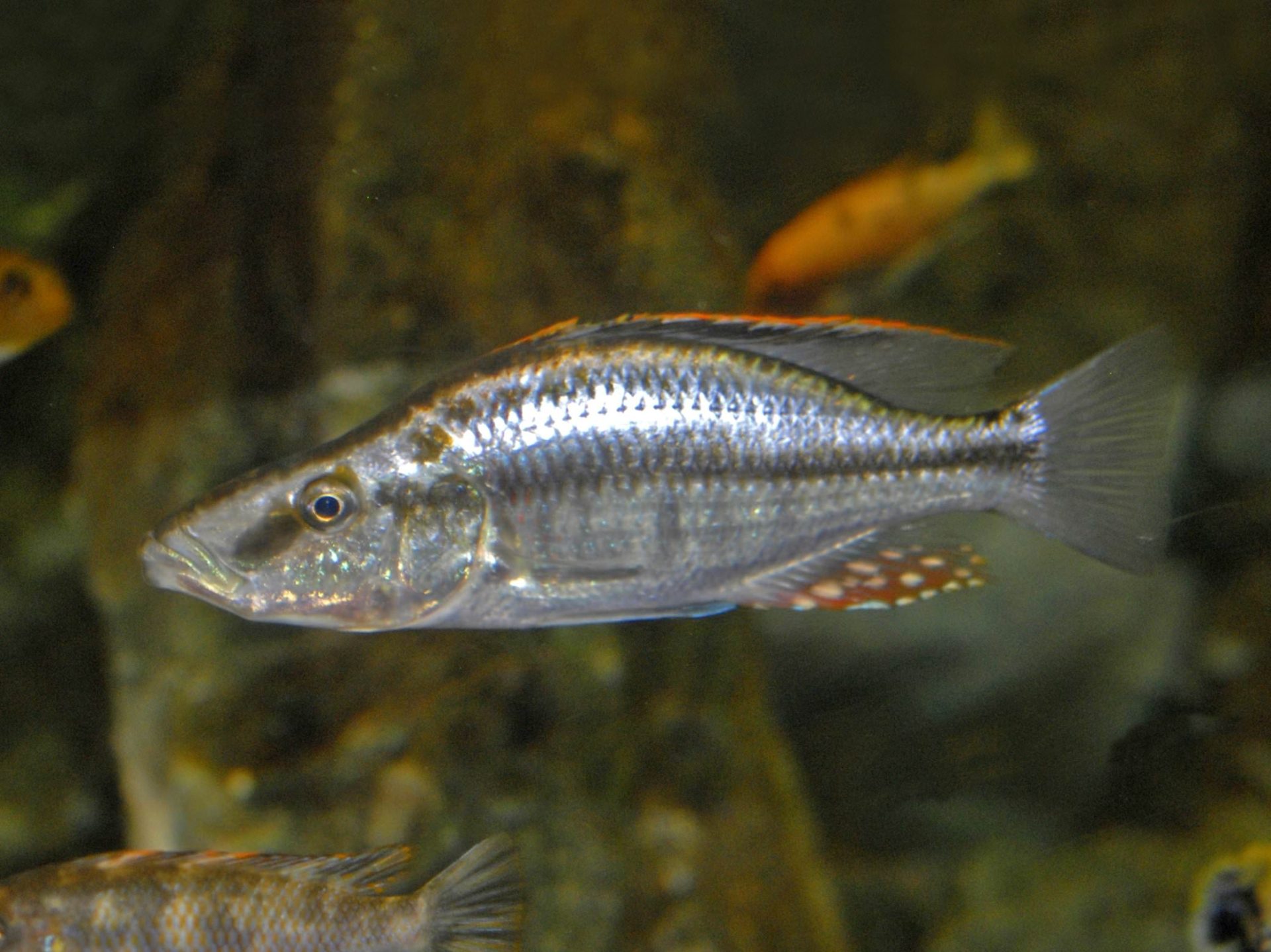
Malawi eyebiter fish are easily recognizable thanks to their large eyes and bright colors.
These fish are a deep blue color all over their body. Along their back, there is a line of yellow spots. These spots start at the base of their tail and continue all the way up to their head.
Their fins are also brightly colored. The dorsal fin is tall and extends the entire length of their body. The anal fin is also tall, but not quite as tall as the dorsal fin.
The caudal fin is forked and extends past the anal fin. The pectoral fins are also brightly colored and are located just behind the gill plates.
Malawi eyebiter fish have large eyes that are set far apart on their head. They have a small mouth that is located underneath their eyes.
Lifespan
Malawi eyebiters have a lifespan of approximately 5 years in captivity. Proper care and maintenance are crucial for these fish since they’re very sensitive to their environment.
Like all fish, their lifespan can be impacted by stress, poor water quality, and a suboptimal diet. If you want your fish to have the best chance at a long life, it’s important to do your research and create the best possible environment for them.
Size
The Malawi eyebiter can grow to be about 4 inches in length.
Tank
Tank Size
The minimum recommended tank size for Malawi eyebiters is 125 gallons. This is a large and aggressive fish that needs a lot of space to thrive. If you want to keep more than one Malawi eyebiter in your tank you will need to add at least another 125 gallons for each fish.
Water Parameters
Malawi eyebiter care is pretty easy, as long as you provide them with the right environment. This fish is found in Lake Malawi in Africa. The water is warm, slightly alkaline, and has a high mineral content.
To replicate this in your aquarium, you’ll need to maintain the following water parameters.
- Water Temperature: 75-82 degrees Fahrenheit
- pH Levels: 7.5-9.0
- Water Hardness: 8-20 dGH
- Alkalinity Levels: 10-20 dKH
What To Put In Their Tank
Malawi eyebiters are a little bit more particular when it comes to the inside of their tank.
For starters, these fish love to swim so you’ll want to make sure there’s plenty of open space for them to move around. That being said, they do appreciate some cover in the form of plants or rocks.
The substrate in their tank should be on the sandier side since they love to sift through it looking for food. Anything too coarse might irritate their delicate fins.
As for plants, they aren’t too particular. Just about anything will do as long as it can provide some cover for them to hide in.
We also recommend adding a few pieces of driftwood to their tank. Not only will this provide them with some hiding spots, but it’ll also help to offset the pH of the water (something that these fish are sensitive to).
Common Diseases
Malawi eyebiter fish are actually quite hardy and disease-resistant. They’re not immune to sickness, but they’re definitely not as susceptible as some other species.
The most common disease that these fish experience is ich. This is a parasitic infection that’s caused by poor water quality. It’s easily recognizable as it appears as white spots on the body of your fish.
The best way to prevent this is by keeping the water quality in your tank high. If you notice any white spots, you should treat them immediately.
Other potential diseases include hole-in-the-head disease and various fungal infections. These are both fairly rare, but they can still happen if the water quality in your tank is not up to par.
As always, the best way to keep your fish healthy is by providing them with a clean and stable habitat. This will go a long way in preventing any diseases or illnesses.
Behavior & Temperament
The Malawi eyebiter is a predatory cichlid that is not to be messed with. It is an aggressive fish that is known to attack other fish, even those that are much larger than it is.
This fish is not for the faint of heart and is best kept in a tank by itself. If you do decide to keep it with other fish, make sure they are of similar size and aggression level. Otherwise, the Malawi eyebiter will make quick work of them.
This fish is also known to be a bit of a jumper, so make sure your tank has a secure lid.
Tank Mates
The Malawi eyebiter is a predatory fish that is not to be underestimated. These fish have a reputation for being fin nippers and can even kill tank mates that are much larger than they are.
As a result, it’s important to be very careful when choosing tank mates for a Malawi eyebiter. The fish need to be both large enough to defend themselves and not on the menu.
With that said, there are still a few species that make good tank mates for a Malawi eyebiter. Here are some of the most compatible:
- Frontosa
- Aulonocara
- Haplochromis
- Mbuna
- Tropheus
- Cynotilapia
Breeding
The Malawi eyebiter is a beautiful but difficult fish to breed in captivity. They’re very picky about their environment and need very specific conditions to spawn.
The first step is to set up a breeding tank. It should hold at least 50 gallons of water and have a sandy bottom. The water should be clean and well-filtered. The temperature should be between 77 and 82 degrees Fahrenheit.
You’ll also need to provide plenty of hiding places. Caves, rocks, and driftwood all work well. Set up the tank so that there are plenty of places for the fish to hide.
The next step is to add your fish. You’ll need at least one male and one female, but more is better. The ratio of males to females doesn’t matter too much.
Once the fish are in the tank, you’ll need to provide them with plenty of food. Live and frozen foods are best, but high-quality pellets will also work.
As the fish eat, they’ll start to produce more waste. This is important because the waste will help to trigger spawning.
You’ll know spawning is about to happen when the female starts to lay eggs. The eggs will be attached to rocks, plants, or other surfaces in the tank.
Once the eggs are laid, the male will start to fan them with his fins. This helps to oxygenate the eggs and keep them clean.
The eggs will hatch in about two weeks. Once they hatch, you’ll need to remove the adults from the tank. They will eat the fry if given the chance.
The fry will need to be fed live foods at first. Baby brine shrimp and bloodworms are good options. As they grow, you can start to feed them pellets.
Conclusion
Malawi Eyebiter care can be challenging but it is definitely worth it. These fish are absolutely stunning and will add a lot of personality to your tank.
They are also relatively easy to care for once you understand their needs. With a little bit of patience and effort, you can have a thriving tank of these beautiful fish.

